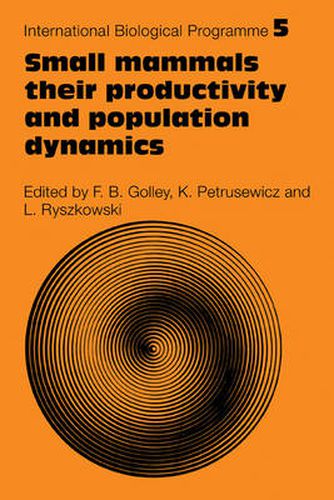Readings Newsletter
Become a Readings Member to make your shopping experience even easier.
Sign in or sign up for free!
You’re not far away from qualifying for FREE standard shipping within Australia
You’ve qualified for FREE standard shipping within Australia
The cart is loading…






The ability of small mammals to exploit environmental resources, based upon a rapid adaptation to short-term changes in population and/or the environment, as well as to a variety of local conditions, implies a strong impact upon natural resources. The role played by small mammal consumers in the flow of energy within natural and man-modified ecosystems is therefore of equal importance to that of larger, longer-lived species which have been studied more intensively. This volume, first published in 1975, looks at small mammal populations with emphasis being placed on their ecology and energy dynamics. It discusses the most productive research techniques and research objectives. The second part of the book deals with the roles of small mammals in ecosystems ranging from the tropics to the tundra and special consideration is given to the impact of rodents on man. Research workers in the fields of mammalogy and ecology will find this an essential book and agriculturists, foresters and anyone concerned professionally with the control of small mammals will find much that is of value to their work.
$9.00 standard shipping within Australia
FREE standard shipping within Australia for orders over $100.00
Express & International shipping calculated at checkout
The ability of small mammals to exploit environmental resources, based upon a rapid adaptation to short-term changes in population and/or the environment, as well as to a variety of local conditions, implies a strong impact upon natural resources. The role played by small mammal consumers in the flow of energy within natural and man-modified ecosystems is therefore of equal importance to that of larger, longer-lived species which have been studied more intensively. This volume, first published in 1975, looks at small mammal populations with emphasis being placed on their ecology and energy dynamics. It discusses the most productive research techniques and research objectives. The second part of the book deals with the roles of small mammals in ecosystems ranging from the tropics to the tundra and special consideration is given to the impact of rodents on man. Research workers in the fields of mammalogy and ecology will find this an essential book and agriculturists, foresters and anyone concerned professionally with the control of small mammals will find much that is of value to their work.